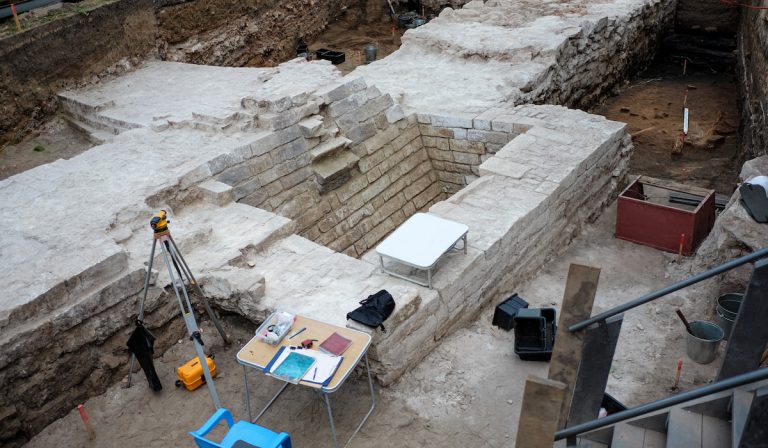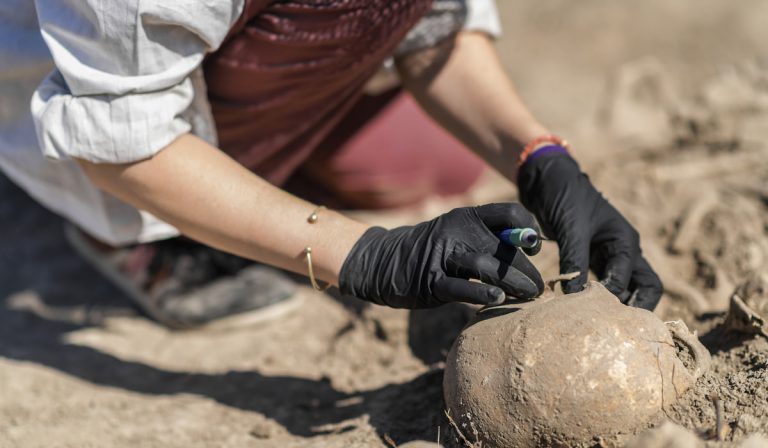St Magnus Cathedral History
The dazzling beautiful example of Roman architecture known as the St Magnus Cathedral is a beautiful fixture along the coast of Orkney. Situated in the city of Kirkwall, this fascinating religious and historical landmark has been standing for 885 years.
What’s even more fascinating than its time-tested durability to remain standing is its unbelievably interesting history that starts well before the first brick was laid.
To get the whole picture of the St Magnus Cathedral we have to take a look at the man it was named after, Magnus Erlendsson, the Earl of Orkney.
The peace-loving noble of the middle ages has had his name survive directly through the cathedral.
By the end of this article you will have a full understanding of not just the cathedral, but the person it was dedicated to as well as the events surrounding it.
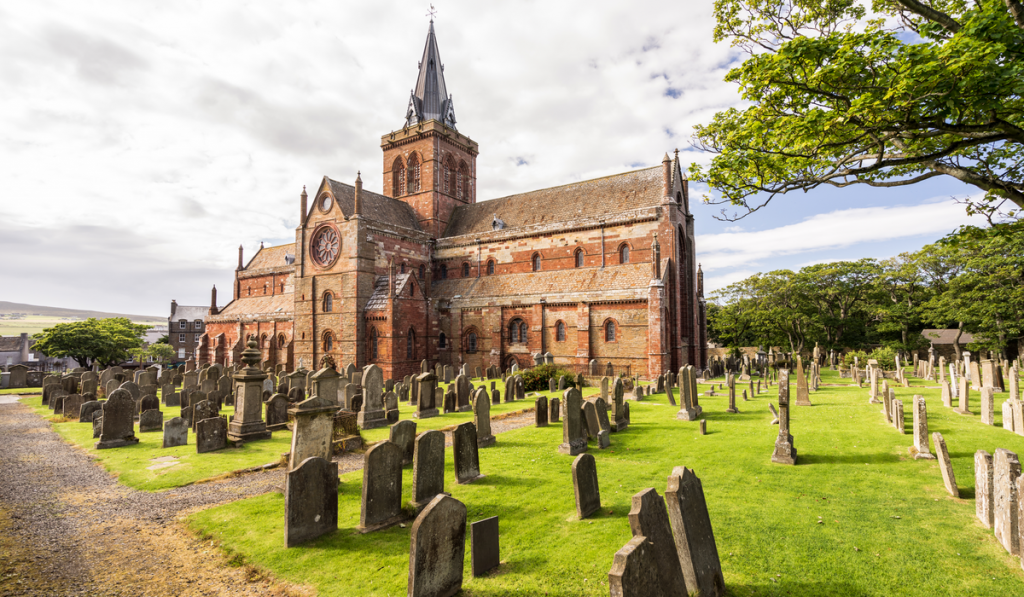
The Earl of Orkney
Early Life
Orkney started off in a weird familial power struggle that had the islands divided between two noble siblings, Erland and Paul.
Earl Erlend was the father of Magnus, while Paul had a son known as Hakon. Unfortunately for the entirety of the family, they were the victims of a Viking raid by the king of Norway, Magnus “Barefoot”.
Magnus quickly overthrew both earls and installed his illegitimate offspring, Sigurd, as the sole ruler over the islands.
The earls were both shipped off to Norway though they wouldn’t survive through the year, while young Magnus and Hakon were taken with the Norwegian king to go raiding in Wales. Well, unfortunately for the Norwegian ruler, Magnus was not into raiding and refused to participate in the affair at all.
Whether this was due to his political foresight to not upset a future ally or due to religious reasons we can’t be absolutely sure. What we do know is that King Magnus despised it and considered the orphaned boy a craven, meanwhile, the young St Magnus was singing psalms on the ship.
In the interest of full disclosure, several historians think this part of St Magnus’s life might have been “inserted” later on to make him appear more pious and noble to future generations.
Regardless, the future Earl must have seen the writing on the wall, because he slipped off the ship one night and managed to get to the coast of Scotland.
There is almost no information about his time in hiding, which is probably due to the fact that he was very much in danger of his life should King Magnus Barefoot find his whereabouts.
Adult Life & Death
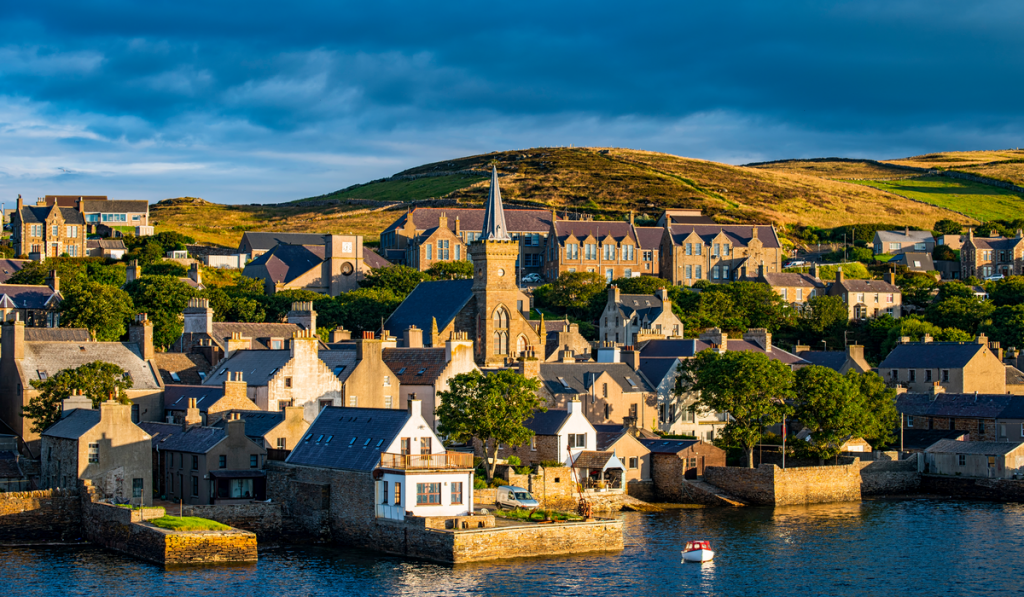
When we next hear about Magnus, Orkney has been given to his cousin Hakon as Sigurd returns to Norway to rule.
Hakon eventually gives Magnus his inherited land back after a bit of discussion and for close to ten years they seem to get along swimmingly. Unfortunately, like most joint rulers in history, this relationship soon crumbles.
If the story is to be believed, Hakon was envious of the charisma and popularity of Magnus who was well-loved throughout the islands.
This allowed members of Hakon’s court to get into his ear about a civil war, which he listened to. A battle was planned to take place in what is now known as Rendall, though cooler heads prevailed and got the two co-rulers to plan a sitdown.
They agreed to meet on the island of Egilsay with two ships and an agreed-upon group of men, though Hakon had more devious plans.
When Hakon showed up on the island he had brought eight military ships and a large group of soldiers that didn’t have peaceful diplomacy in mind. Magnus went into hiding on the island though was quickly found and brought to his cousin.
Magnus tried to offer different solutions that would allow him to live, going on a pilgrimage that kept him from Orkney for good, imprisonment and exile in Scotland, and finally mutilation.
Hakon agreed to the third plea though the people around him informed him that one earl had to die. Conveniently for Hakon, he was given the decision on who would live between the two.
Hakon had to be rejected by one of his men before finally getting his cook to execute Magnus, who had asked his men not to interfere on his behalf.
Hakon’s cook, Lifolf, killed Earl Magnus on April 16, somewhere between 1115 – 1118. Magnus was not given a Christian burial, despite his known piety and religious beliefs.
The Aftermath of Egilsay
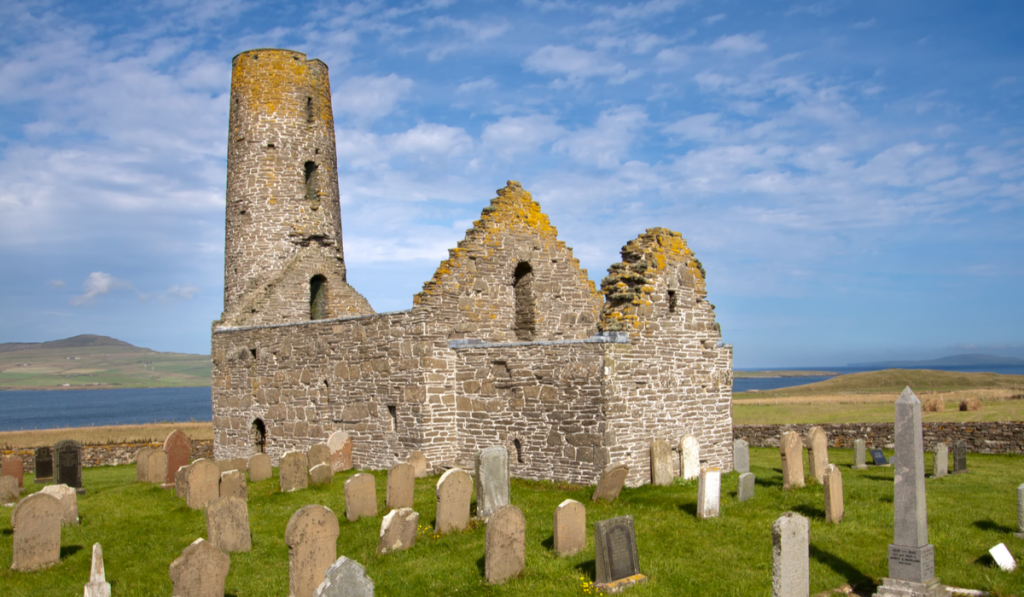
According to the Orkneyinga saga, miracles started taking place in quick succession after the death of Earl Magnus. It talks about the location of his burial site once being sharp and unkempt crags, though after his death the area became a rolling green field.
Hakon eventually allowed his body to be retrieved at the pleas of Thora, mother of Magnus.
The church he was moved to (no one is quite certain where this church was) is said to have been illuminated by a heavenly light with angelic aromas wafting through the area.
Hard as these may be to believe, they had a profound effect on the people of Orkney who were quickly growing to believe that the area Magnus was buried in had healing properties.
There are a number of miracles that are said to have taken place at the burial site of Magnus Erlendsson, to numerous to name here.
Magnus was made a saint a little over twenty years after he was buried (1135 most likely) by the Bishop of Orkney, William the Old.
His body was eventually moved to Kirkwall, to the modest Church of St. Olaf. This wouldn’t be the last time his remains would be moved, finally being relocated to the massive, sandstone religious sanctuary we now know as the St Magnus Cathedral.
The St Magnus Cathedral
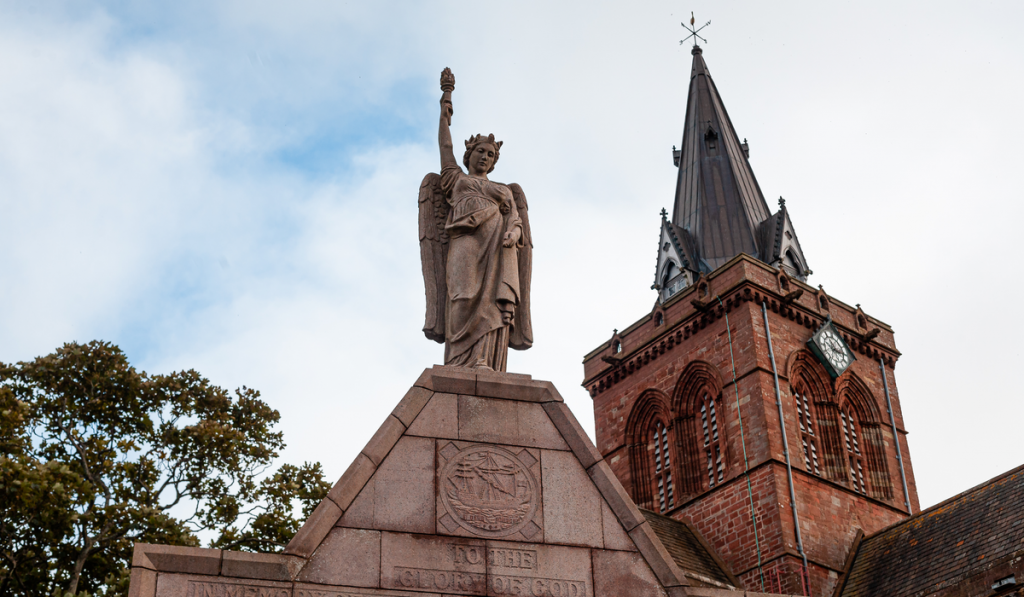
Origin of St Magnus Cathedral
The reason St Magnus Cathedral was originally constructed was more than likely political. Earl Rognvald Kolsson (nephew of St Magnus) had eyes on Orkney and was looking for a way to insert himself into the conversation of the commonfolk.
His father counseled him to inform the people that he would build a cathedral in Kirkwall that would be the most remarkable in Orkney.
This was because his cousin Paul had declared himself the sole ruler of Orkney, despite Rognvald’s claim. On top of this, Rognvald had tried to overthrow the current Earl but was struggling to gain an advantage in battle and was looking for a way to avoid a bloody war for his throne.
It seemed to work pretty well, the people really began to rally around him.
Rognvald was the type of ruler who wanted to make sure nothing could go amiss, however. So he kidnapped his cousin Paul and either exiled him and blinded him, or killed him outright. Say what you want about Rognvald’s moral fiber, you can’t say he wasn’t thorough.
Paul’s three-year-old nephew Harald became a joint ruler or earl next to Rognvald. You would think considering how he handled Paul he would have done something awful to Harald, but it seemed that Rognvald allowed the boy to co-rule without issue.
The Creation of St Magnus Cathedral
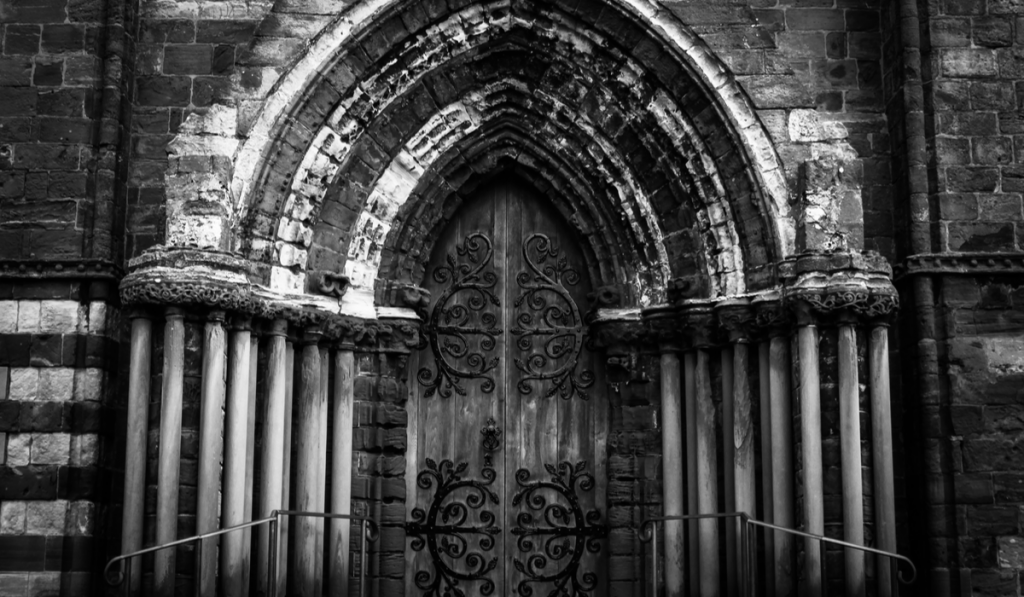
The building began in 1137 as Earl Rognvald remained true to his word.
The cathedral was to be located just off the coastline to be seen from well into the sea. Unfortunately, a project so ambitious and magnificent doesn’t come cheap and eventual Rognvald was left with little more than pocket lint.
So he went to his crafty father once again who advised him to work out a deal for land with the commonfolk in exchange for currency.
As usual, his father’s plan worked swimmingly and the building process resumed. Though life had other plans for the earl who never got to see his cathedral completed.
In the month of August 1158, Earl Rognvald was killed by Thorbjorn Klerk along with eight men that accompanied him. His remains were moved and rested in the cathedral he had spent so much to build and by 1192 he was also made into a saint. The truth of his sainthood is sometimes questioned as no historical text can corroborate it.
The Completion of St Magnus Cathedral
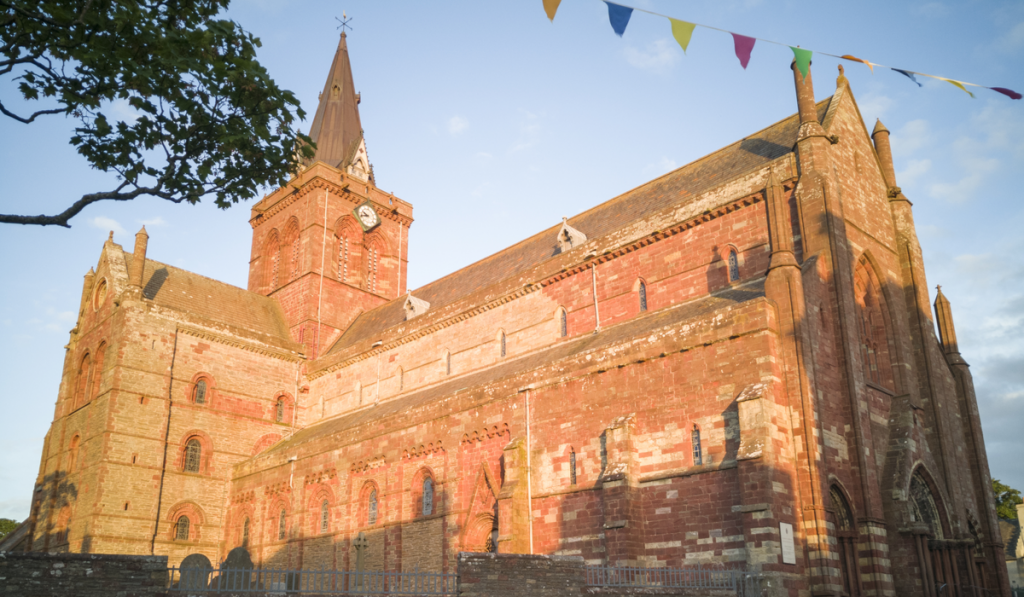
The cathedral in total took three hundred years to be fully erected and is widely considered one of the best-maintained cathedrals in the entirety of Scotland. Despite several events that could have brought down the beautiful cathedral including the reformation, it has stood the test of time quite admirably.
There have been efforts to restore it on occasion including the government in 1845 and again by a different group from 1913 – 1930 that added a steeple to the bell tower.
They also replaced the mundane windows with stained glass and renovated the floors to reveal an elegant red sandstone tiling.
Conclusion
The St Magnus Cathedral’s history is as fascinating and gripping as any historical fiction you could find today. It tells a story of desperate men vying for power and the beauty that came from these medieval struggles. To this day the St Magnus Cathedral is one of the most impressive, well-maintained architectural accomplishments that can be found within Scotland.


